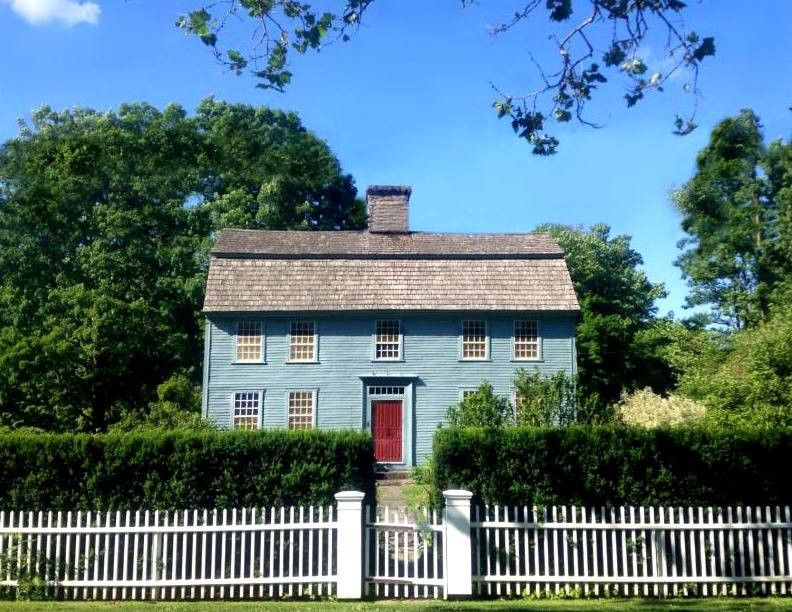
The Glebe House Museum and Jekyll Garden is a historic treasure nestled in the charming town of Woodbury, Connecticut. Dating back to around 1740, this remarkable site celebrates its 100th anniversary as a museum in 2025, offering you a unique opportunity to experience both Revolutionary War-era history and stunning garden design. The museum showcases the former home of Reverend John Rutgers Marshall and his family, complete with authentic 18th-century furnishings including notable Woodbury-made pieces that bring Connecticut’s colonial past to life.
When you visit this picturesque property in the Litchfield Hills, you’ll discover two distinct but complementary experiences. The historic house provides an intimate glimpse into Revolutionary-era Connecticut living, while the Gertrude Jekyll Garden offers a masterful landscape design that complements the home’s historical significance. The museum operates seasonally and may be closed during certain periods except for special events, so planning your visit during their open season ensures a memorable cultural and historical adventure in one of Connecticut’s most beautiful historic landmarks.
Find available hotels and vacation homes instantly. No fees, best rates guaranteed!
Check Availability Now
Glebe House Museum & Garden
The Glebe House Museum is a historic gem nestled in the Litchfield Hills of Woodbury, Connecticut. Built around 1740, this architectural wonder showcases a unique blend of gambrel and saltbox roof styles that will catch your eye immediately.
When you visit, you’ll step back in time to the 18th century. The house was home to John Rutgers Marshall, Woodbury’s first Anglican priest, who arrived with his wife Sarah in 1771. The museum features an outstanding collection of regional furniture that helps recreate authentic colonial living.
One of the earliest historic house museums in America, the Glebe House offers more than just indoor attractions. The property includes a beautiful garden designed by famed British garden designer Gertrude Jekyll. As you stroll through the grounds, you’ll appreciate the thoughtful landscaping that complements the historic setting.
Throughout the year, the museum hosts family-friendly events that bring history to life. From spooky All Hollow’s Eve Cemetery Tours to festive Holiday Festivals, there’s always something exciting happening at this picturesque location in Woodbury’s village center.
Rating: 4.6 (49 reviews)
Location: 49 Hollow Rd, Woodbury, CT 06798
Contact: (203) 263-2855
Website: Visit Website
Historical Significance of the Glebe House
The Glebe House, built around 1740, stands as a remarkable piece of Georgian colonial architecture in Woodbury, Connecticut. When you visit, you’ll be walking through nearly 300 years of American history!
This historic home became especially important during the Revolutionary War era. From 1771 to 1786, it was home to Reverend John Rutgers Marshall, his wife Sarah, their nine children, and three enslaved people.
What makes this house truly special is that it hosted the first Episcopal Church election in the United States. This groundbreaking event helped shape American religious history.
In 2023, the Glebe House celebrated its 99th year as a museum. The property gets its name from “glebe,” which referred to land given to support the parish priest and his family.
When you explore the house, you’ll find beautiful period furniture. The collection includes wonderful examples of furniture crafted right in Woodbury during the 18th century.
The museum joined the National Register of Historic Places in 1971, recognizing its historical value. Today, it continues to educate visitors through tours, educational programs, and special events.
Through careful preservation, the Glebe House offers you an authentic glimpse into 18th-century Connecticut life. The simple yet elegant farmhouse shows how families lived during America’s formative years.
Exploring the Jekyll Garden
The Gertrude Jekyll Garden at the Glebe House Museum offers visitors a rare American example of the famous British designer’s distinctive style. This carefully restored garden combines formal structure with seemingly casual plantings to create a sensory experience that changes throughout the seasons.
Garden Design Principles
Gertrude Jekyll’s unique approach to garden design is on full display in this Woodbury gem. Created in 1926, the garden features her signature style of using drifts of plants arranged by color and texture. Jekyll designed this garden remotely, never visiting Connecticut herself, yet it perfectly captures her vision.
The garden blends formal elements with cottage-garden informality. You’ll notice carefully planned “rooms” separated by hedges and walkways. Each area flows naturally into the next, creating a journey of discovery as you walk through.
Jekyll’s famous color schemes are evident here – hot colors in one section transitioning to cooler blues and purples in another. Native plants mix with traditional English garden favorites, showing her adaptability to local conditions.
Seasonal Highlights
Spring transforms the Jekyll Garden into a celebration of rebirth. Daffodils and tulips create bright splashes of color, while flowering trees provide delicate blossoms overhead. The early perennials begin to emerge, promising the fullness to come.
Summer brings the garden to its peak glory. Roses climb trellises, while delphiniums and foxgloves create vertical interest. The herbaceous borders overflow with blooms in carefully orchestrated color schemes. You’ll want to visit in the morning when the garden is at its freshest.
Fall offers a different kind of beauty with seed heads, autumn flowers, and changing foliage. The garden’s structure becomes more apparent as some plants fade. Winter reveals the garden’s bones – the careful design elements that hold everything together even in dormancy.
Find available hotels and vacation homes instantly. No fees, best rates guaranteed!
Check Availability Now









